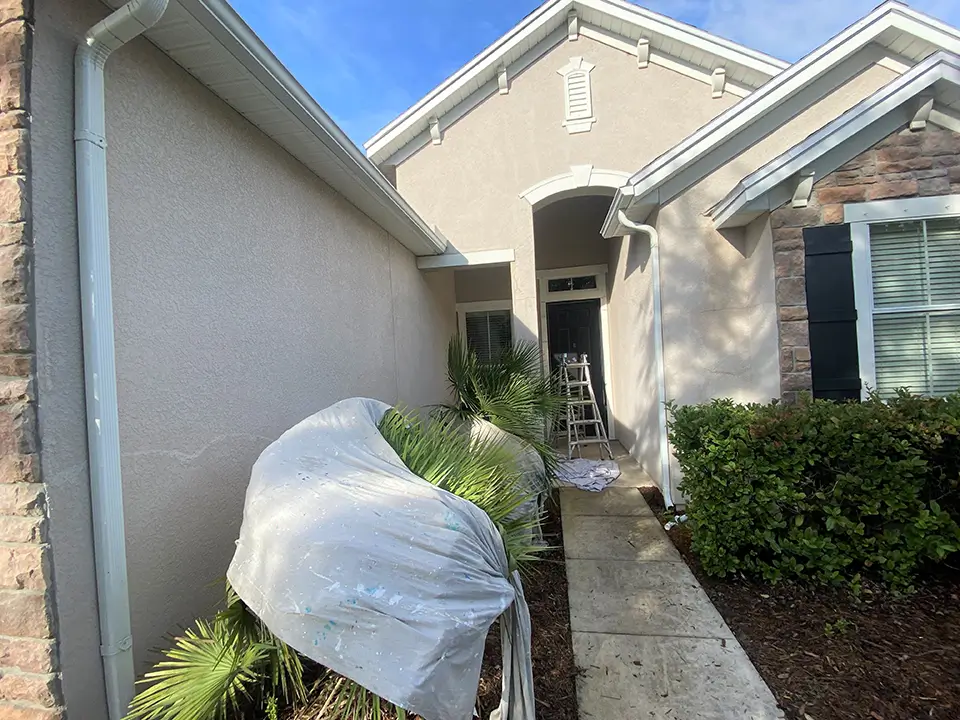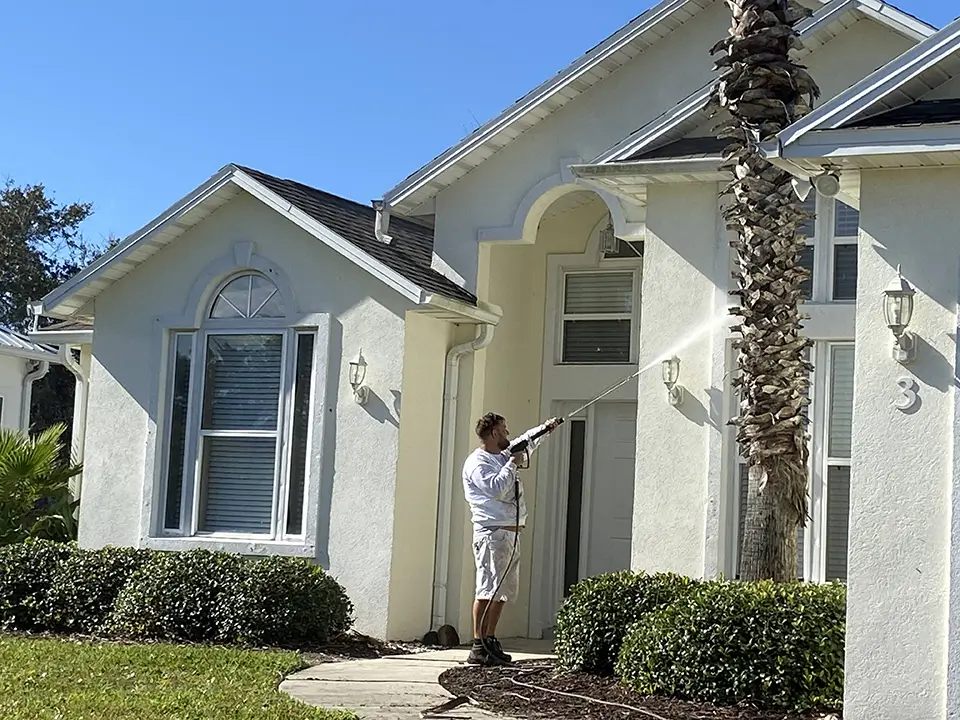Parapet walls play a crucial role in protecting roofs, terraces, and balconies from weather elements. However, due to their exposure, they are particularly vulnerable to water damage, erosion, and deterioration over time. Coating a parapet wall with the proper materials can greatly enhance its durability, providing essential protection and waterproofing to ensure the structure remains intact and functional for years to come.
In this guide, we’ll walk you through the process of coating a parapet wall, the importance of doing so, and the steps to ensure your parapet wall is effectively protected from the elements.
What is a parapet wall?
Parapet wall definition: A parapet wall is a low, protective barrier that extends above the edge of a roof, balcony, terrace, or other elevated surfaces. Its primary function is to prevent falls, but it also serves as a structural element that can enhance the aesthetic appeal of a building. Parapet walls can be made from various materials such as brick, stone, or concrete, and are often capped with materials like metal or stone to offer additional protection from rainwater.
Despite their practical and architectural uses, parapet walls are exposed to the harshest environmental conditions. Rain, wind, and temperature fluctuations can lead to cracks and water penetration, causing damage not only to the parapet but also to the roof or terrace they protect. This makes proper coating and waterproofing essential for maintaining the integrity of the entire structure.
–> Exterior house painting service in Saint Augustine

Why is parapet wall coating important?
Coating a parapet wall is essential for two primary reasons: protection and waterproofing. Without proper coating, parapet walls are exposed to constant wear from weather conditions, particularly rain and extreme temperatures. This exposure can cause cracks, erosion, and moisture infiltration, leading to serious structural damage over time.
By applying a protective coating, you not only shield the wall from these damaging effects but also extend its lifespan. A quality parapet wall coating prevents water from seeping into cracks and joints, stops erosion, and adds an extra layer of durability. Additionally, proper waterproofing ensures that moisture does not penetrate the wall, protecting the underlying structure, roof, or terrace from leaks and damage.
Materials needed for coating a parapets
Before starting the coating process, gather all the necessary materials to ensure a smooth and effective job. Here’s a list of what you’ll need:
- Waterproof coating or paint: Choose a coating material specifically designed for exterior surfaces and waterproofing.
- Primer: A high-quality primer will help the coating adhere better to the surface.
- Sealant: Use a waterproof sealant for any cracks or joints in the wall.
- Brushes and rollers: Depending on the size of your parapet wall, have appropriate-sized brushes or rollers for applying the coating.
- Protective capping material: Metal or stone capping to cover the top of the parapet wall and provide additional protection against water damage.
- Caulk gun: For applying sealant in cracks and joints.
- Protective gear: Gloves, safety goggles, and appropriate work clothing.
Red more: 5 Surprising benefits of exterior painting of your buildings
Step-by-step guide to coating a parapet wall
Step 1: Surface preparation
Before applying any coating, it’s important to properly prepare the surface. Start by cleaning the parapet wall thoroughly, removing any dirt, dust, or debris. Inspect the wall for cracks, gaps, or damaged areas that need repair. Fill any cracks with a waterproof sealant and allow it to dry completely before proceeding. If the parapet wall is elevated or difficult to reach, proper scaffolding should be used to ensure both safety and accessibility during preparation.

Step 2: Applying primer
Once the surface is clean and repaired, apply a layer of primer. This helps the coating adhere more effectively to the wall and ensures better long-term protection. Make sure the primer is suitable for exterior use and matches the type of coating you’ll be applying next. Allow the primer to dry completely before moving on.
Step 3: Waterproofing techniques
With the primer in place, it’s time to apply the waterproof coating. Use a roller or brush to apply the coating evenly across the entire surface of the parapet wall. Pay special attention to joints and corners, which are common areas for water to infiltrate. Apply multiple coats if necessary, allowing each layer to dry fully before applying the next one.
Step 4: Finishing touches and capping
Once the final coat has dried, add a protective capping material to the top of the parapet wall. This step is crucial for preventing water from sitting on the surface and eventually penetrating the wall. Capping materials such as metal or stone are often used to protect the top of parapet walls, sealing the structure from rain and moisture.
Read more: Professional wood and metal surface coatings
How to waterproof a parapet wall
Waterproofing is one of the most critical steps when it comes to parapet wall coating. To ensure your parapet wall is fully protected from water damage, follow these waterproofing best practices:
- Seal all joints and cracks: Use a high-quality waterproof sealant to close off any potential entry points for water.
- Apply multiple layers of waterproof coating: The more layers of coating, the better the protection against water infiltration. Make sure each layer is applied evenly.
- Focus on problem areas: Pay extra attention to the corners, edges, and any areas where the parapet meets other surfaces, as these are the most vulnerable to water damage.
Parapet wall coating before and after: What to expect
The difference between a coated and uncoated parapet wall is noticeable both in appearance and functionality. Before coating, parapet walls may show signs of wear such as cracks, discoloration, or erosion. After the application of a protective coating, the wall will look refreshed, with a smooth, even surface. More importantly, the coating provides a durable barrier against water damage, significantly extending the wall’s lifespan and protecting the structure below.
Common mistakes to avoid when coating parapet walls
When coating a parapet wall, avoid these common mistakes to ensure the job is done right:
- Skipping surface preparation: Failing to clean and repair the surface properly can result in poor adhesion of the coating and reduce its effectiveness.
- Using the wrong materials: Ensure that all coatings, primers, and sealants are designed for exterior use and waterproofing. Using interior-grade products will not provide sufficient protection.
- Ignoring corners and joints: These areas are the most susceptible to water damage, so make sure they are thoroughly coated and sealed.
Read more: Paint sprayer vs. roller?
Coating a parapet wall is essential for preserving both its appearance and structural integrity. By following the right steps and using proper waterproofing techniques, you can protect the wall from harsh weather, prevent water damage, and extend its lifespan. Don’t forget to address vulnerable areas like joints and corners, and always use high-quality materials designed for exterior use. With proper care, your parapet wall will remain a durable and attractive feature of your building for years to come.
Ask for professional help! We are happy to help with exterior wall painting of family houses and vacation homes in the Saint Augustine area!
Call for a free quote! 1(904) 217-9681 – Peter Hando – local painter in Saint Augustine


